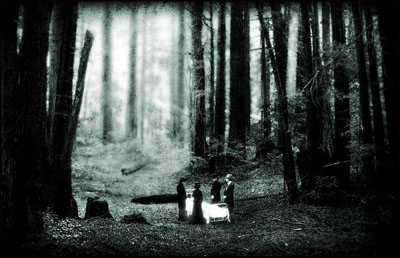“NERVOUS96” by Bill Domonkos (Original Music by Jill Tracy and Paul Mercer)
Happy Friday the 13th! A lucky day for us, to be sure– in addition to Ross’s regular installment of the FAM, Coilhouse is proud to present NERVOUS96, a new, suspenseful, next-to-silent retro sci-fi short by director Bill Domonkos.
Inspired by original musical seance recordings by longtime ‘Haus favorite Jill Tracy, and the deliciously spooky violin of Paul Mercer, Domonkos has taken vintage footage and repurposed it to present the tale of a frantic, lonely woman, increasingly overwhelmed by debt and uncertainty in a world where technology has become increasingly invasive, even menacing. His “complex chiaroscuro style marks a marriage between silent-era special effects master George Méliès and the digital age.”

“Single white female. Lonely, Seeking soul mate. Humanoid preferred…”
From the NERVOUS96 press release:
Known for his distinctive craft of manipulated archival footage combined with 2D and 3D computer animation, special effects, and photography, Jill Tracy fans best know Bay Area filmmaker Bill Domonkos for the multiple award-winning “The Fine Art of Poisoning,” and his collection of acclaimed videos for legendary masked band The Residents.
“The Fine Art of Poisoning,” (set to Jill Tracy’s seminal song) has become a cult favorite, garnering praise from Clive Barker, Guy Maddin, writer Warren Ellis, and well-over 100,000 views on YouTube, and a recent screening at London’s famed National Gallery.
Domonkos was completely inspired by pianist Jill Tracy and violinist Paul Mercer’s “Musical Séance,” a poignant live project that employs the duo’s astonishing channeled improvisations. Domonkos meticulously crafted excerpts from actual séance recordings to create the emotional voice of the “NERVOUS96” character.
Here ’tis:
NERVOUS96 from Bill Domonkos on Vimeo.
(Click those arrows on the right to watch it full screen.) The musical score for NERVOUS96 is also available for download on Bandcamp. Congratulations to Domonkos/Tracy/Mercer on this sharp and toothsome indie triumph.
















